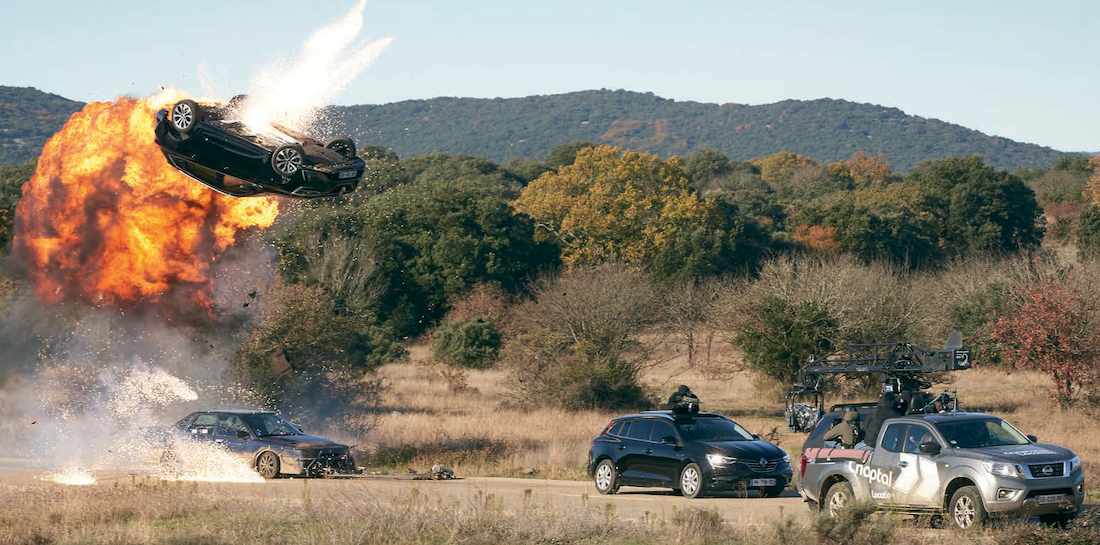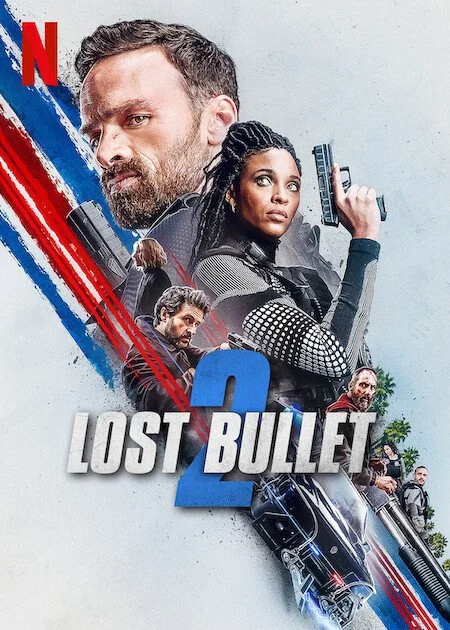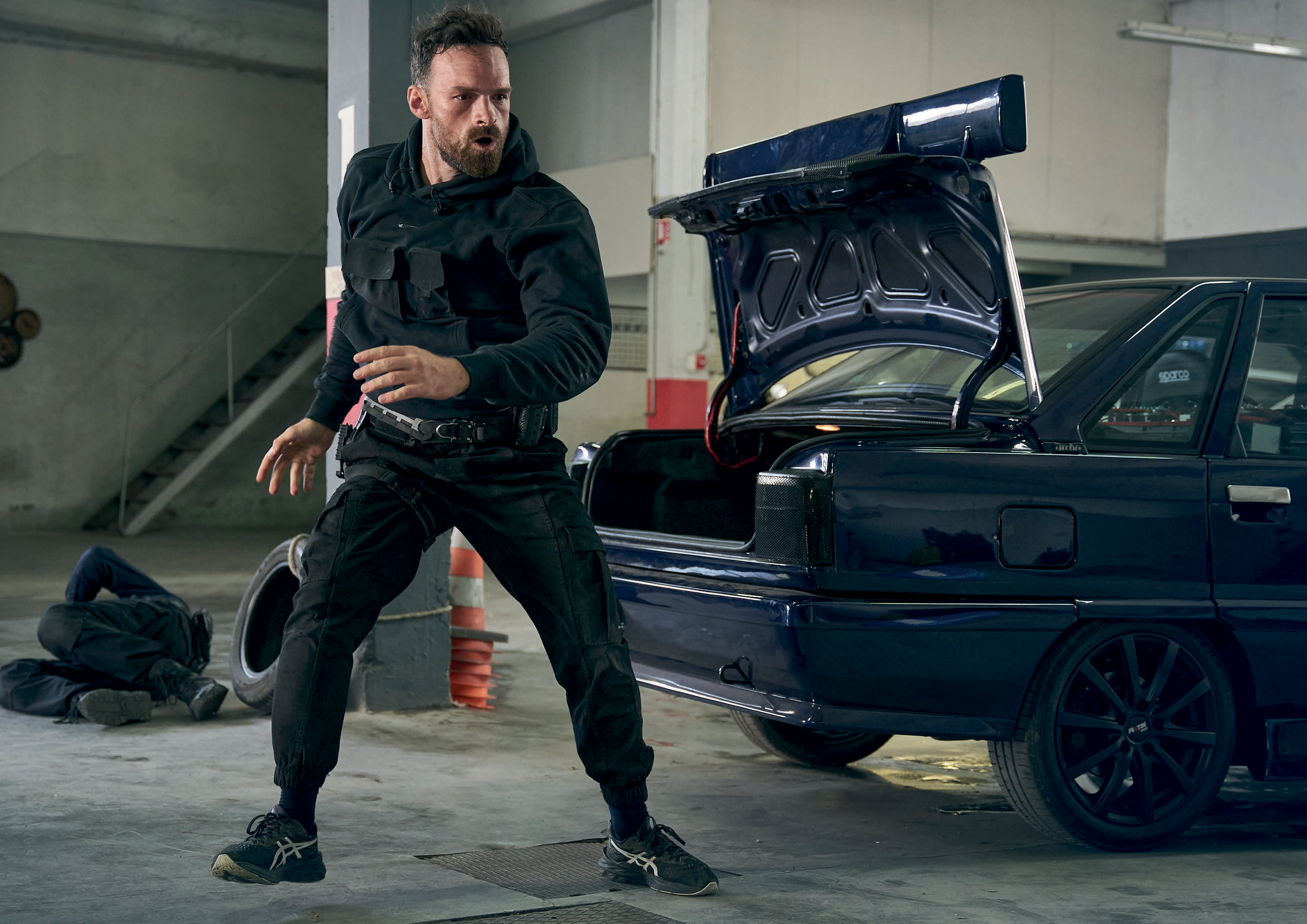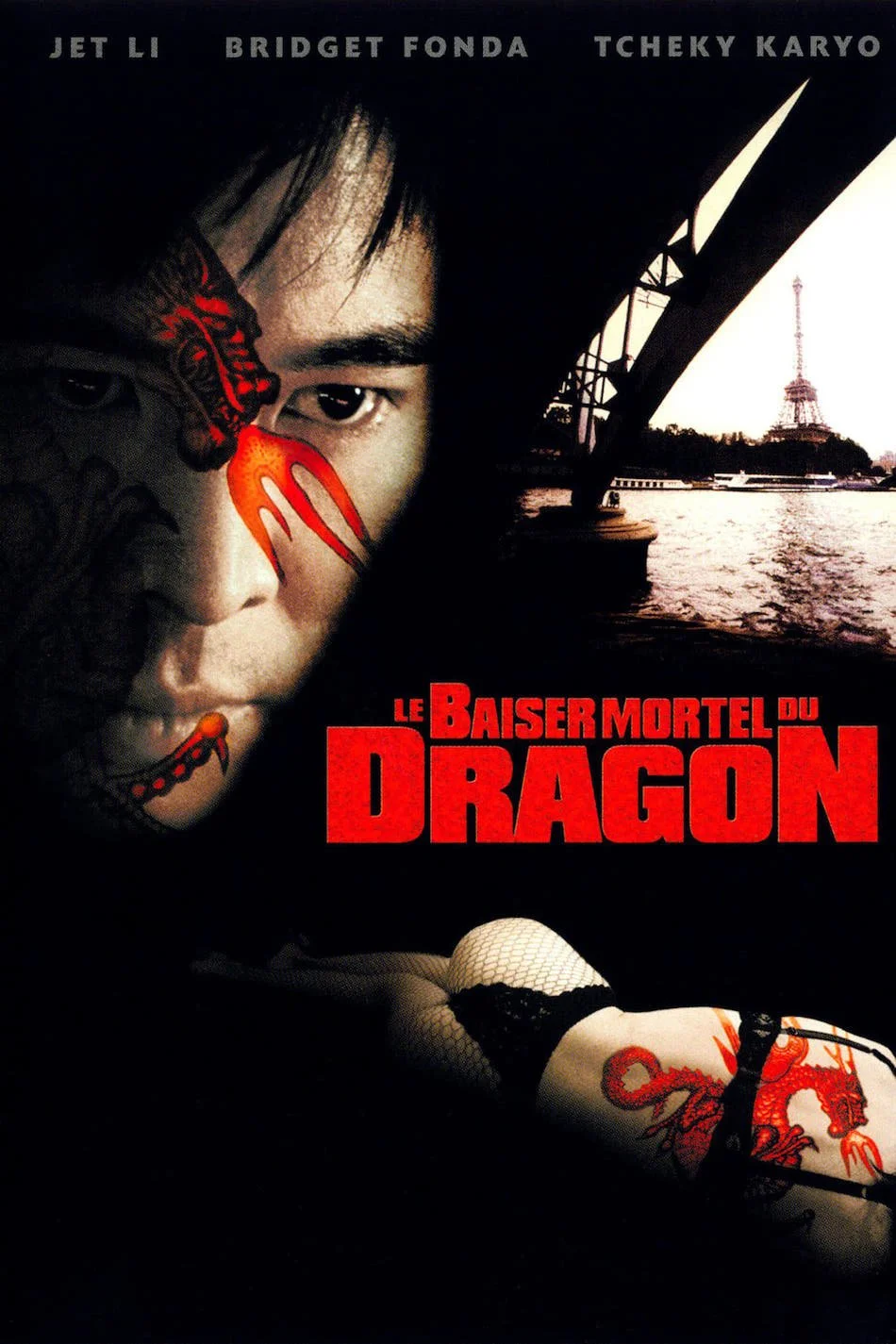The Neon Splatter Interview: Guillaume Pierret
Photo courtesy of Netflix
When LOST BULLET was released in 2020, it caused a storm with Netflix viewership and became a favourite amongst action movie fans. Its writer/director, Guillaume Pierret, had previously garnered notoriety from his short films—INDEMNE, SURRENDER, and MATRIACHE. Now with the release of LOST BULLET 2, Pierret is gaining a reputation as one of the most exciting filmmakers working today. The follow-up movie finds Lino (played by star-in-the-making Alban Lenoir) wanting to find the people responsible for killing his younger brother. I talked to Pierret about writing action for the screen, the staging of his car chases, and his influences…as well as many other things.
***
Neon Splatter: In the first film, Lino is quite the “Everyman” who is put in a dangerous situation and reacts to it. In this sequel, right from the beginning of the film, he’s pretty much bent on revenge. What made you want to change his character motivation?
Guillaume Pierret: I'm not sure Lino was ever the “Everyman,” especially given his street fighting skills, his mechanic skills, and his penchant for heists gone wrong. He has a thirst for justice, with a capital “J,” and we can say that he also has a hero complex. He is ready to sacrifice everything for the people he loves. In the first film, Lino suffers the events. He is at the mercy of Areski, and everything is against him. So in the sequel, what I wanted to see is: how would Lino act when given a choice? The character remains the same, except this time he is proactive. And it's not revenge he's looking for, it's justice. He had twice the opportunity to kill his brother's killer, he didn't.
NS: It inspires quite an intense performance from Lenoir, even more than the first film. How did your direction help with that evolution in his performance?
GP: I think the character is better defined in this sequel, with clearer, purer motivations. And since it's almost a reboot of the first film, this time there's a new origin story: Lino starts from scratch, he becomes a cop, he has a new life...all that helped Alban to fit better in the character’s skin. And he was also helped by the exhausting pace of filming! Fatigue is real...so that was intense too.
NS: Going back to the very beginning, you started your career by making some genuinely thrilling short films. Can you describe how they helped you make a feature film?
GP: There is no better film school than making short action films. We are always faced with the worst possible situations, because we have no money, no experience, and we’re trying to do the impossible. It is in these moments that we learn everything. The short films allowed me to learn how to manage with next to nothing in such a short amount of time. To cheat, to deceive with the camera. Also, to learn the magic of editing. But the greatest benefit I got from making them was the relationship of trust I have with Rémi Leautier, the producer of my feature films. We have been friends since childhood. He made all the short films with me, in front of the camera, but also in production. We trained together, and we continue this relationship by making feature films. It's invaluable. This mutual trust is the basis of the films we make.
NS: Both SURRENDER and MATRIARCH contain extensive car chase scenes. Have you had an interest in cars from a young age?
GP: Yes, I have loved car chases in movies since I was little. And even more than chases, I absolutely love it when a vehicle is an extension of a character. Han Solo and the Millennium Falcon, Batman and the Batmobile, Marty McFly and the DeLorean. But beyond that, when you specialize in short action films, you have to assume and go all the way…and the holy grail of action scenes are car chases! The reason why I’m making feature films is because I have shot real car chases in the short films without money. It's a great business card.
NS: How involved are you in the designs of the cars featured in the Lost Bullet movies?
GP: I'm there every step of the way because the vehicles are essential to me. In the script, I describe them briefly so that each of my collaborators can form their own idea. Then I meet with my production designer, Delphine Richon, to refine the look of the vehicles (the bumpers, etc.). Then come our mechanics and practical effects managers who will custom-make the things requested with their expertise. Sometimes it is very hard to get what I dreamed for budgetary or practical reasons. But often it's the opposite, my initial idea is magnified by these people. For example the electric harpoons: I dreamed of this design, I wanted something that looks very dangerous, but I couldn't draw them. Then, one fine day, a concept artist offered me his vision, hyper aggressive, he hit the bullseye…it was perfect.
NS: Do you have an example of something you designed that the mechanics and practical effects managers said you couldn’t do?
GP: For lack of budget, we couldn’t buy the R21 rally that I would have liked. So, we stayed on the original model, which does the job very well. I would also have inflated the body of the car, made it wider, more massive, more modern, but that would have eaten up the budget.
Photo courtesy of Netflix
NS: The car designs are integral to the plot of the movie and seeing Lino create them are some of the most exciting parts of the movies. That brings up the subject that always interests me: what do your action sequences look like in the script? I know different writers have different styles of how they write it. How detailed do you write the action on the page?
GP: The script is meant to be read by a whole bunch of different people, from the Netflix team to our mechanics. So, the goal is not to go too in-depth in the details, but to make the reader have a certain feeling with each scene. When reading each action scene, we must understand its intensity, its concept, its highlights, without ever losing sight of the characters. We must be able to imagine the generosity of the scenes in just a few lines, so as not to overwhelm the reader. So, I use a lot of metaphors. It's very imaginative. Very airy too, to give the rhythm to each scene. I don't hesitate to write “BAM!!” or “BANG!!” to make it more fun to read. But I will still describe the main ideas, which then allow to chapter the scenes.
NS: Talking about action design now, and more specifically the fight scenes, how would you describe the style of which you stage your action? Are there certain things you avoid doing?
GP: The most important thing is to have fun, without losing sight of the character. Each blow given must bring him closer or further from his objective. Each action scene must revolve around two or three enjoyable moments, which can make you laugh, or feel pain. Everything is in the dosage, between the generosity of the scene, and its gratuity. It shouldn’t be too long, but, above all, not too short either! For the fight scenes, we are very dependent on the set. We don't shoot in the studio, so you must adapt to the sets you find. Once I have the set, I go around it with Manu Lanzi, our choreographer. I show him the scenography: where does the character come from, in what emotion, what intensity, what degree of violence, how many opponents, what is his objective, and the money-shots that I absolutely want (a guy who goes through a wall, 10 policemen rushing at Lino at the same time, etc.).
Then, Manu will choreograph it, which he will film and preview with his stuntmen, before showing it to me. This allows us to see which camera [angles] will be the most profitable. We then agree on the choreography, in each of its details: we refine, we remove certain moves, we add others. Manu adds his touch—his ideas of often very funny blows, which hurt a lot. That's exactly what I'm looking for.
Photo courtesy of Netflix
Then, we shoot. Each fight scene takes an average of two days to shoot, which is very little. Manu is by my side, he directs his stuntmen, knows exactly how to cut out his choreography, so as not to exhaust his team. We work hand-in-hand until we get what we both want, and I love those moments.
Once the images are in the box, Manu will propose his vision of the editing. Then, once I have edited all the car scenes, I start doing my version of the fight editing. It's never far from Manu's editing, but I must consider the complete pace of the film, so that each action scene is in the right place. Sometimes, I find myself cutting things that Manu and I love. But it's for the good of the movie in the end.
NS: Can you give me an example of a part of a fight scene that hurt you to cut out?
GP: There was a very spectacular move where Lino grabbed the leg of one of the cops, knocked him down, and in the same movement smashed his knee to the ground. I couldn't keep it in 1, so we put it in 2. Unfortunately, it was a kind of money shot that was followed by another much more adequate money shot to end the sequence. So, I had to cut it again! Maybe we will finally manage to place it in the third film.
NS: Something that a lot of people notice from the fight scenes is how nullified the punches sound, as opposed to the exaggerated ‘pops’ that we normally hear in movies. Explain that creative choice in the sound design.
Photo courtesy of Netflix
GP: I'm not sure I tried to lower the sound of the hits. On the contrary, they are very strong and very marked. But what perhaps makes the difference with the other fights of the style, is that all the rest of the sound, the sound of the environment, is also very neat: the steps, the noise of the clothes, the movements, the mix of the music. When you add it all up, maybe the knocking sounds sound more natural.
NS: I’m not sure if you want to spoil the trick on how you did it, but I really am curious - the scene in LOST BULLET 2 where the cars were being electroshocked, were those cars actually thrown across the air? How much of it was practical effects?
GP: Except for the electric arc, everything was practical! The cars are really propelled through the air (using hydraulic cannons). The explosions and sparks are real. We always knew which way the cars were going to fly, but never quite where they were going to land. So, when the last car jumps 15 meters and lands on the R21, it's not fake, it really happened.
Photo courtesy of Netflix
NS: Regarding the theme of LOST BULLET 2, it feels like a colder, more paranoid movie than the first film. None of the cops can be trusted. Yet, our hero becomes a police officer himself. Can you explain that conflict and does it reflect how you personally feel about authority?
GP: I didn't ask myself that question. I'm making an action film, where a man is on the run. When you write this kind of film, the first question you ask yourself is “What are the police doing?”. If the police are on the hero's side from the start of the film, then there is no more film. In all the best films of the “man on the run” genre, the police are always the antagonist. What better than the police—or the system—which tracks down one of its own? MINORITY REPORT for example… I am also very influenced by the series The Shield. Also, the character of Jack Bauer. The best episodes of 24 are the ones where Jack goes it alone, hunted down by law enforcement or his own crew! It adds to the human stakes, it's not the same thing to face colleagues/friends, or lawless thugs. But all that is still cinema, there is no political message behind it. Everything is a pretext to isolate the hero. That's the only way it works.
NS: In France, it feels like it’s been a centre point that’s consistently made solid efficient action movies. Are there any films or filmmakers from that stable that have been influential to you?
GP: It's always surprising to read that, because here in France we don't have that impression. There are simply no action movies!
NS: I was really referring to early Luc Besson films, but also some of my personal favourite action films like A BOUT PORTANT, NUIT BLANCHE, and DISTRICT 13.
GP: Oh yes, NUIT BLANCHE is super cool. And I love DISTRICT 13, TRANSPORTER, etc. There were some at the time of Europa Corp (Luc Besson and Christopher Lambert’s film company), but they have become increasingly rare. There are a few attempts from time to time, but they are never really action films in the first sense of the term, with all that entails of set-pieces, narrative structure, etc. And we can unfortunately count [all of them] on the fingers of one hand. As a spectator, I have always been frustrated not to see more of this type of cinema in my country. Same for science fiction, horror, or fantasy. So in terms of influence, you have to go back quite far for me: THE HORSE, THE OLD GUN, NEST OF WASPS, LE BAISER MORTEL DU DRAGON (with Jet Li).
NS: Have you reflected on the success of the first film? You might be aware that it featured on a lot of lists of ‘Best Action Movies of 2020.’ It was certainly on the top of mine!
GP: It is obviously a source of great pride for me, but also for the whole team. We are passionate about this type of film, so to make one, with such a small budget, in French, and see it exported as well: Christmas came early!
NS: Lastly, you end LOST BULLET 2 with the hint that the story will continue into a third film. Is that definitely going to happen? If so, how far in development are you in the movie? Is there anything you can tell us about it?
GP: The third episode is already on track, yes. As for knowing if it will see the light of day, until it is shot and edited, we are never sure! In any case, I'll start writing next month.
LOST BULLET and LOST BULLET 2 are currently streaming on Netflix.








